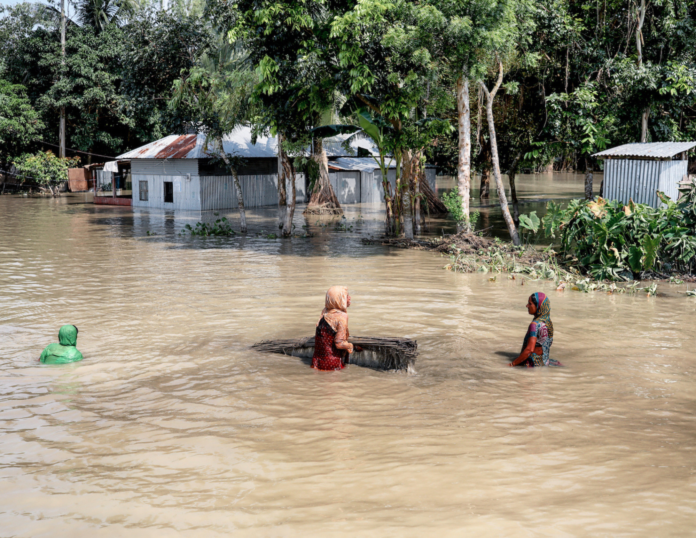Bangladesh is located to the East of India on the Bay of Bengal. It is one of the most densely populated countries in the world with a population of 169.4 million people, with a third of its inhabitants living by the coast. Lying only 15 feet above sea level, Bangladesh is experiencing extreme impacts of climate change including high susceptibility to violent floods, high temperatures, landslides, intense storms and cyclones. As a result of Bangladesh’s climate challenges, people across the country are facing high levels of internal displacement, food insecurity, and mortality rates. As a tropical country, it is also prone to cyclones and higher temperatures with their frequency and intensity exacerbated by climate change.
Read More: How Gender-Responsive Climate Finance Empowers Bangladesh’s Women
Ranked among the 10 countries most vulnerable to climate change, despite emitting only about 0.5% of global emissions, Bangladesh has suffered losses worth $3.72 billion and witnessed 185 extreme weather events due to climate change between 2000 to 2019. According to the World Bank, average tropical cyclones cost the country $1 billion (USD) annually.
High Rates of Disaster Displacement
One estimate shows that by 2050, one in every seven people in Bangladesh will be displaced by climate change. Additionally, Bangladesh may lose approximately 11% of its land due to sea-level rise by 2050 and in turn risk displacement of up to 18 million people. This is already evident through the recent displacement of over 7.1 million people in 2021 due to climate disasters.
Given these threats, some experts have warned the largest mass migration in human history has already started in Bangladesh due to the worsening impacts of climate change, with a risk of displacing up to 50 million people by 2100 due to sea-level rise.
Bangladesh’s Ingenious Early Warning System
Despite being a victim of climate injustice, Bangladesh is fighting back with resilience instead of fixating on doom and gloom. The country has taken several steps to instill high levels of climate awareness in its people, making the country’s social capital its biggest asset in fighting back, including an organized human chain of communication to relay threats of flooding whereby frontline community members periodically monitor the rise in water level across the country and report back to the country’s flood monitoring center. This system has saved thousands of lives in the events of flooding.
References
- The Climate Reality Project. (2021). How the climate crisis is impacting Bangladesh. Article.
- The World Bank. (2022). Urgent Climate Action Crucial for Bangladesh to Sustain Strong Growth. Article.
- The World Bank. (2021). Climate Change Knowledge Portal, Bangladesh. Webpage.
- GermanWatch. (2021). Global Climate Risk Index 2021. Report.
- Anadolu Agency. (2022). Climate change displaced millions of Bangladeshis in 2022: WHO. Article.
- NPR. (2023). Facing floods: What the world can learn from Bangladesh’s climate solutions. Articles.



